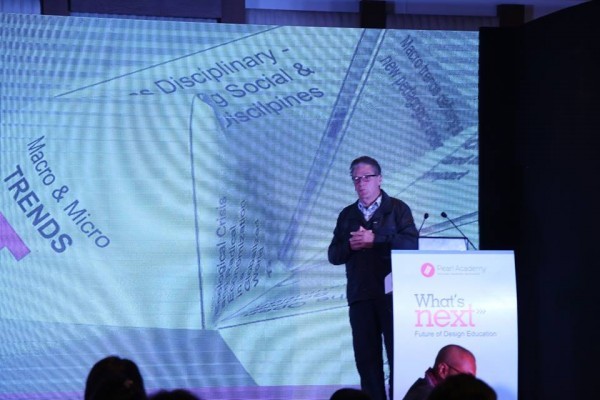At a recent event hosted by Pearl Academy, a leading design, fashion and business institute, industry leaders from across design practices were brought together to discuss the future of design education in India. At the event, John Thackara, an internationally renowned design thinker, philosopher and journalist talked about how the future of designers is changing at a rapid pace.
This is a result of an increasing realization among masses about resources being finite, this is leading them to work collectively towards sourcing as much as they can and conserve resources for the future generations. This is increasingly leading businesses to move to a more informal format, it has been predicted that 65% of all workers will work in an informal work environment by 2020. The hierarchical structure is becoming a thing of the past with various stakeholders coming to the center of the process.
After a detailed discussion among leading thinkers of today’s generation such as- Madhav Raman- Architect and Urbanist, Jogi Panghaal-Design Professional, Rahul Mishra-Fashion Designer, Vikas Satwalekar- Design Academician, Deepankar Bhattacharya- Strategic Design Consultant and many more, there were many trends that were identified in terms of creating a Globalized World, Social Groupings that are bring created, the Role of an Educator in this scenario and the New Work Cultures that are emerging as a result of these current trends.
 The sense of well-being emerged as one of the key drivers that young professionals globally look for even when they choose their profession. To achieve well-being, social grouping of a diverse set of professionals coming together to work towards a common cause. The structure of a group which works together, would thus need to be inclusive of all groups involved, flexible and organic. The educators would thus need to look at nurturing talent in a manner which would enable the evolution of young minds.
The sense of well-being emerged as one of the key drivers that young professionals globally look for even when they choose their profession. To achieve well-being, social grouping of a diverse set of professionals coming together to work towards a common cause. The structure of a group which works together, would thus need to be inclusive of all groups involved, flexible and organic. The educators would thus need to look at nurturing talent in a manner which would enable the evolution of young minds.
A clear definition of design education in particular would be necessary to address students in a manner which will inculcate empathies for existing complexities. Educators would need to take into consideration that with ready accessibility of information on the internet, students might increasingly choose to opt for an open curriculum which will include them choosing their own faculty and courses. Evaluation would also change to be more of self-evaluation and peer-peer evaluation.
To support students with their projects, it would be key to get their ideas to travel within a circle of experts, where their ideas are built upon with the help of experts. With such flexibility, it is a good possibility that in the near future more and more professionals will adapt to nomadic work settings. These work settings would need to be collaborated with policy makers and their functions for a well-rounded balance.
Key issues in design education are in constant change and these need to be mapped and monitored into current and ongoing courses for the curriculum to stay relevant and stimulating for both students and faculty. The two day confluence organized by Pearl Academy aimed at a collaborative sharing of insights which will help transform design education going forward.












